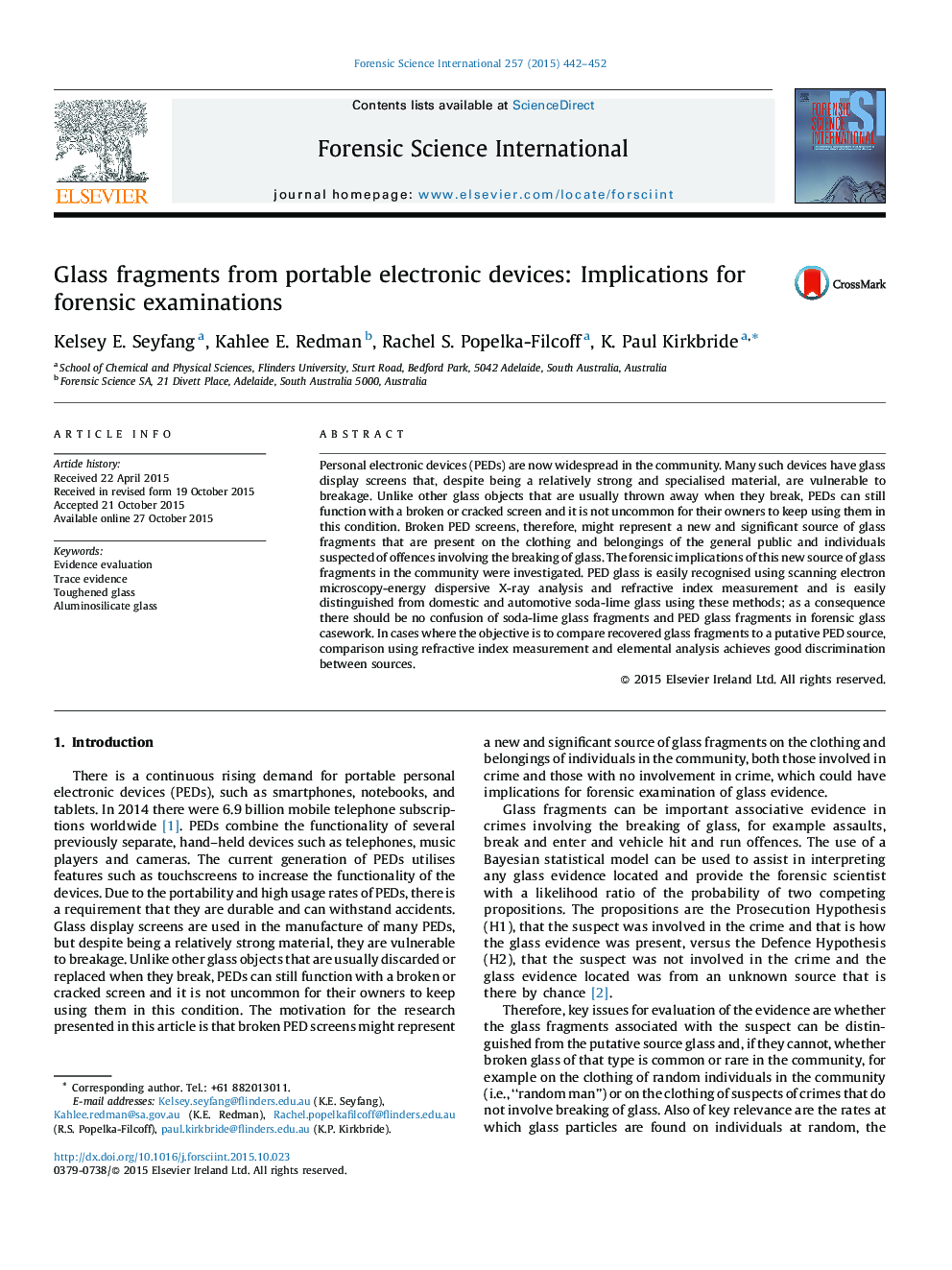| Article ID | Journal | Published Year | Pages | File Type |
|---|---|---|---|---|
| 6552020 | Forensic Science International | 2015 | 11 Pages |
Abstract
Personal electronic devices (PEDs) are now widespread in the community. Many such devices have glass display screens that, despite being a relatively strong and specialised material, are vulnerable to breakage. Unlike other glass objects that are usually thrown away when they break, PEDs can still function with a broken or cracked screen and it is not uncommon for their owners to keep using them in this condition. Broken PED screens, therefore, might represent a new and significant source of glass fragments that are present on the clothing and belongings of the general public and individuals suspected of offences involving the breaking of glass. The forensic implications of this new source of glass fragments in the community were investigated. PED glass is easily recognised using scanning electron microscopy-energy dispersive X-ray analysis and refractive index measurement and is easily distinguished from domestic and automotive soda-lime glass using these methods; as a consequence there should be no confusion of soda-lime glass fragments and PED glass fragments in forensic glass casework. In cases where the objective is to compare recovered glass fragments to a putative PED source, comparison using refractive index measurement and elemental analysis achieves good discrimination between sources.
Related Topics
Physical Sciences and Engineering
Chemistry
Analytical Chemistry
Authors
Kelsey E. Seyfang, Kahlee E. Redman, Rachel S. Popelka-Filcoff, K. Paul Kirkbride,
